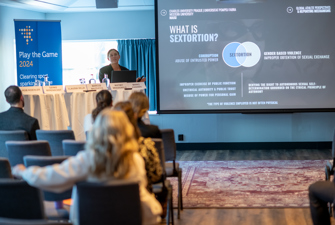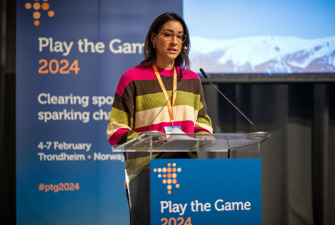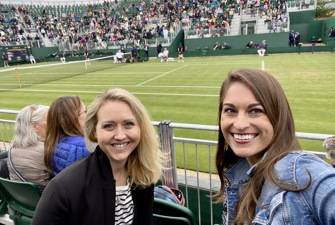"We should aspire to create a world where safeguarding is not just a policy but a lived reality"
OPINION: It is imperative to ensure that the voices of athlete survivors are heard in developing safeguarding models, argue three prominent experts on safeguarding who point to progress and challenges in the journey towards safeguarding.
Opinions on playthegame.org reflect the views of the author(s).
Fifteen years ago, the landscape of safeguarding within international sports organisations was vastly different from what it is today. As we reflect on this journey, there's a palpable sense of hope and optimism for the strides made in enhancing safeguarding policies and practices. While recognising the progress achieved, it's crucial to acknowledge the inherent limitations and challenges that persist in these efforts.
The pioneering research and advocacy work by professors Celia Brackenridge, Kari Fasting, Sandi Kirby and others into athlete protection from harassment and abuse in sport started in the 1980s. But it took public disclosures of high-profile cases of athlete abuse before significant advancements in international sports safeguarding were made.
Where policies were once sparse and enforcement was lax, today we see a concerted effort across many sport organisations towards designing and implementing safeguarding frameworks.
This shift reflects a collective commitment to prioritising the safety and well-being of all sports participants. However, it must be stressed that a successful safeguarding framework must be implemented within a positive and healthy safeguarding culture to be truly effective.
However, progress does not come without obstacles. Despite the development of comprehensive policies, the implementation, enforcement and evaluation of these measures often fall short. This gap underscores the need for ongoing scrutiny and improvement in our approach to safeguarding and the need for the creation of a safeguarding system that can truly be trusted.
Athletes are increasingly becoming involved in making reforms
A beacon of hope amidst these challenges has been the amplification of athlete voices. Athletes, some identifying as survivors themselves, have increasingly found platforms to share their experiences and advocate for change. Their courage and resilience serve as powerful catalysts for driving meaningful reforms within the sports community.
Yet, within this engagement, we must confront the reality of tokenism and surface-level involvement. It's imperative to move beyond symbolic gestures and ensure that athlete voices are genuinely integrated into decision-making processes.
This recognition has led to the creation of networks, such as the Athletes Network for Safer Sports, which prioritise survivor-led initiatives and collective action. With a mission to create and strengthen safe spaces for people impacted by abuse in sports, the network leverages the collective power of survivors to continue their healing journey and advocate for systemic change in the world of sport.
The collaborative efforts of organisations like the International Olympic Committee (IOC) underscore the potential for positive change.
On the request of the international federations, the IOC convened a Safeguarding Working Group that developed the Safe Sport Regional Hub Initiative, following the announcement by the IOC of a 10 million US dollar fund per Olympiad to strengthen safeguarding at the local level.
The model recognises the importance of contextualised approaches. Harm must be appropriately addressed where it occurs. It also emphasises the need for collective action, with athletes – and critically the voices of those with lived experience of abuse in sport – intergovernmental organisations, civil society and sport working together throughout all levels of the initiative, building in measures to reinforce the importance of collaboration, trust and transparency.
The hubs seek to develop local safeguarding capacity to support those harmed in sport and provide independent access to recourse and remedy for those affected by harassment and abuse in sport. Two pilot hubs, one in Southern Africa and one in the Pacific Islands, are currently in preparation. By engaging athletes and survivors in the decision-making process, these models strive for a more inclusive and sustainable safeguarding framework.
Finding the perfect balance in safeguarding requires constant recalibration. Making sure survivors are meaningfully involved in the decision-making process is one way to re-establish the balance.
An individual’s response to abuse is highly personal. It is unlikely that a single survivor is capable of representing the needs and voices of so many people throughout the sporting ecosystem. That being said, it is equally essential to make sure that multiple voices are included.
The IOC’s Safeguarding Working Group exemplifies this ethos. By ensuring representation from the most impacted stakeholders, we move closer to a more inclusive and sustainable safeguarding model which will need to be monitored and independently evaluated to ensure effective learning and possible replication amongst other international sport organisations.
The Safe Sport Regional Hub Initiative demonstrates a proactive approach towards athlete-centric solutions to recourse and remedy, critically recognising that one size does not fit all, and that trusted, evidence-informed, safeguarding-led approaches, in collaboration with both sporting and non-sporting actors must be central efforts to both prevent and respond to abuse in sport.
The goal: Successful survivor-centred safeguarding models across all sports
As we envision the future, our goal is clear: replication of successful survivor-centred safeguarding models across all international sports organisations and a continuous effort to effectively include athletes' voices and well-being from the start, not as an afterthought.
Empowering athletes with lived experience to take the lead at the local level ensures a tailored, culturally adapted, trauma-informed approach to remedies that more effectively meet athletes’ needs.
We aspire to create a world where safeguarding is not just a policy but a lived reality for every athlete, and the whole sport ecosystem. In celebrating the progress made and acknowledging the challenges ahead, we reaffirm our commitment to safeguarding in international sports.
Through collective action, learning from other sectors, innovative approaches, and a steadfast dedication to amplifying athlete voices, we pave the way for a safer and more inclusive sporting community.
Watch the session on safeguarding at Play the Game 2024
Safeguarding of athletes was also a key theme at Play the Game 2024 with presentations by Tine Vertommen and Joanna Maranhão, among others. Watch the session 'In the aftermath of abuse: Where can athletes find remedy?' below.







